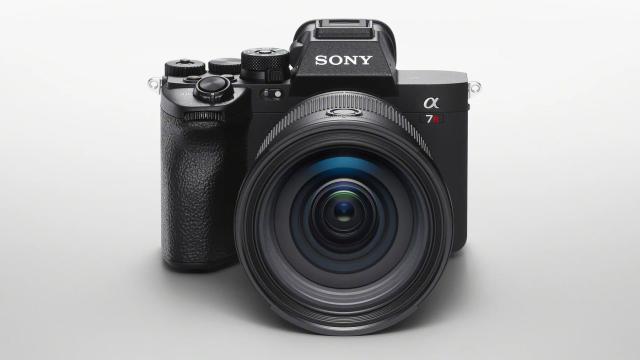Sony has long claimed to offer industry-leading autofocus with its Alpha line, including big updates to the eye-tracking algorithm in the A7R IV announced three years ago. But the company is about to make a quantum leap forward with its new A7R V — the first Sony camera to include an AI processing chip that can help pinpoint a subject’s eye by tracking their entire body.
Even if your subject is not looking directly into your camera, focusing on the eye is the best way to snap an engaging portrait, as that’s where humans naturally look when interacting with each other, even if it’s just a photograph. So a lot of work has been done to make cameras better at not only pinpointing a subject’s eye but keeping the focus locked to it, even as they move around in the frame. With cameras like the Sony Alpha 7R IV, eye-tracking even works when a subject is turned away from the camera, and only a small part of their eyes are left visible. But in many instances, if a subject’s eyes are completely occluded, eye-tracking autofocus doesn’t know where to lock on, but Sony is about to change that.
The new Alpha 7R V is the first Sony camera to include a dedicated AI processing chip on board that has been trained to recognise and distinguish between specific subjects, like animals, insects, planes, trains, and automobiles. But it can also recognise humans, and use a person’s pose, based on 20 tracked points that define their skeletal structure, to intelligently figure out where their head and eyes should be located at all times, to help guide the autofocus.
So if the system is tracking a person’s eyes, and they turn away from the camera or walk behind a structure like a tree that occludes their face, the camera can still ensure its autofocusing in the right spot. The system can even be set to focus on a specific person, like the bride on the dance floor at a wedding, and if they dance out of and back into the frame, the camera will automatically resume focusing on them when spotted by the AI-powered AF system.
The new Alpha 7R V remains a step below the Alpha 9 II for professionals like sports photographers who need to prioritise speed and burst shooting to ensure they capture the perfect moment. It still tops out at around 10fps shooting compared to the A9 II’s 20fps. But with a 61-megapixel back-illuminated Exmor R CMOS sensor (compared to just 24.2-megapixels on the A9 II) the new A7R V is a beast for portraits. And it carries over the pixel shift shooting mode from the previous model, where a 240.8-megapixel image can be created by combining 16 images snapped consecutively while slightly shifting the position of the sensor.
The 567 phase detect focus points of the Alpha 7R IV have been upgraded to 693 points on the new Alpha 7R V, while focus bracketing allows a user to capture up to 299 photos taken with “sequentially shifted focus points” to create an incredibly sharp composite in post-production. The camera also boasts an updated five-axis in-camera stabilisation system, which Sony says can provide for an additional 8 stops of exposure in shooting conditions where you can’t lock off the camera on a tripod.
The Alpha 7R V’s video capabilities have also been improved, with the camera now capable of recording at 8K at either 24fps or 25fps for up to 30 minutes thanks to the camera body’s heat dissipation system. That might sound like overkill given that 8K TVs are still few and far between, but it affords more flexibility in post-production, particularly when the final product only needs to be delivered in 4K. Editors can zoom or pan across an 8K video frame without any resolution compromises for a 4K output. The A7R V can also capture 4K video in full frame mode at 60fps or 50fps while gaining some extra zoom, or switch to a Super-35 mode where over-sampled 4K can be recorded at 30fps, 24 fps, or 25 fps. Everything is captured to a pair of CFexpress Type A slots which is backward compatible with SDXC and SDHC cards, but video can also be captured externally with the camera outputting 16-bit 4K footage through a cable connection.
Sony hasn’t changed much with the A7R V’s physical hardware, although its 3.2-inch LCD screen can now swing out from the camera, to the side, and be rotated 180 degrees to face forward for those wanting the best webcam money can buy.
The one new feature that isn’t entirely welcome, but not entirely surprising, is a slight price bump for the camera body alone. The Alpha 7R IV sold for $US3,500 ($4,859) three years ago, but the new Alpha 7R V is now $US3,900 ($5,414), available sometime in mid-December.
